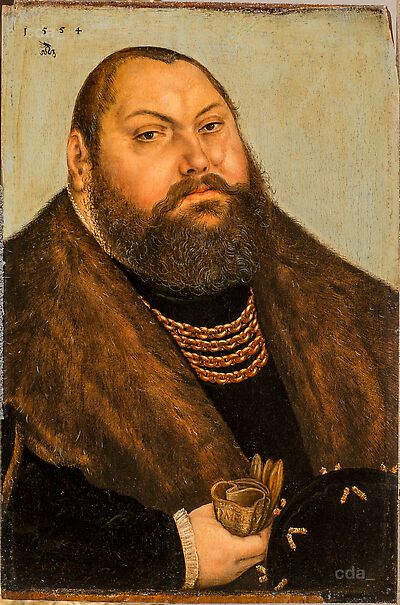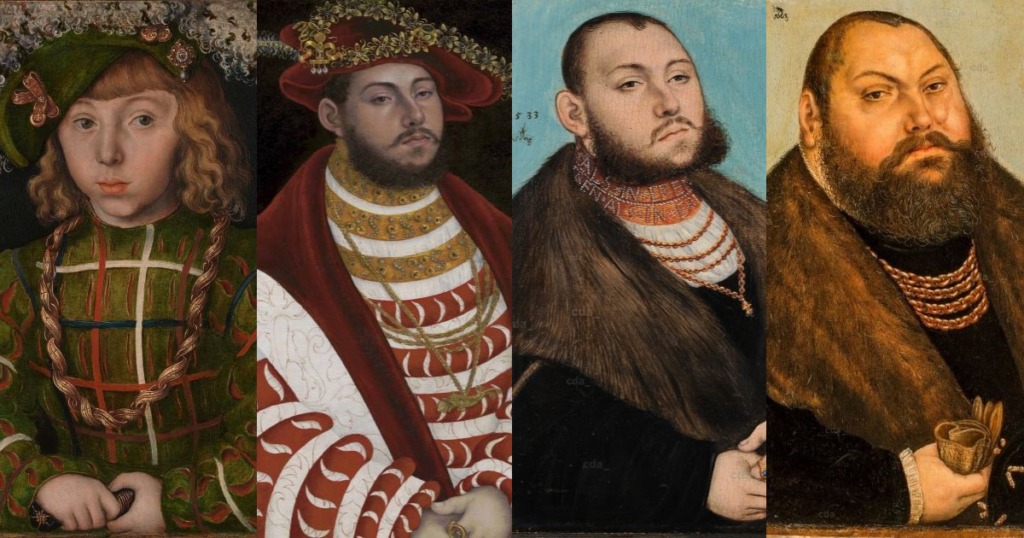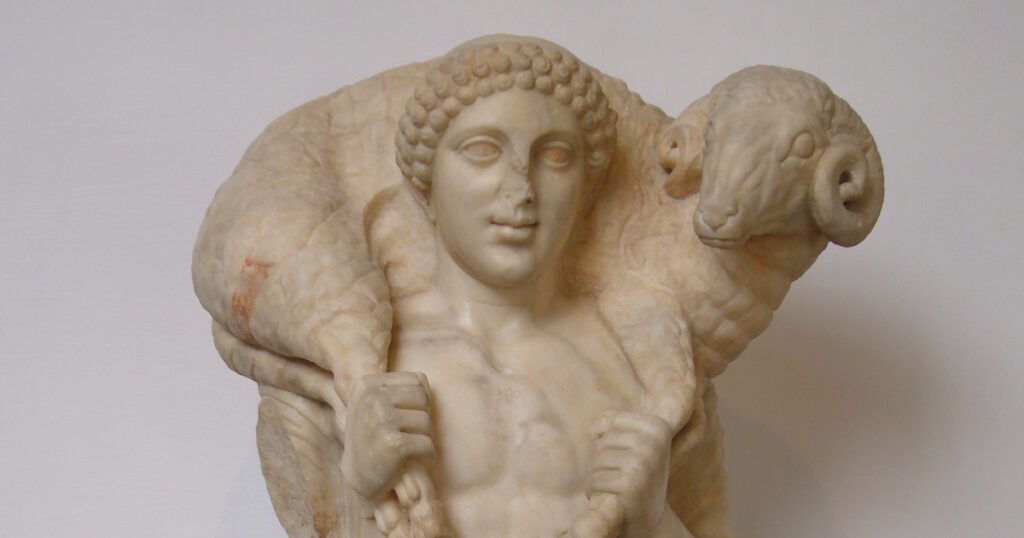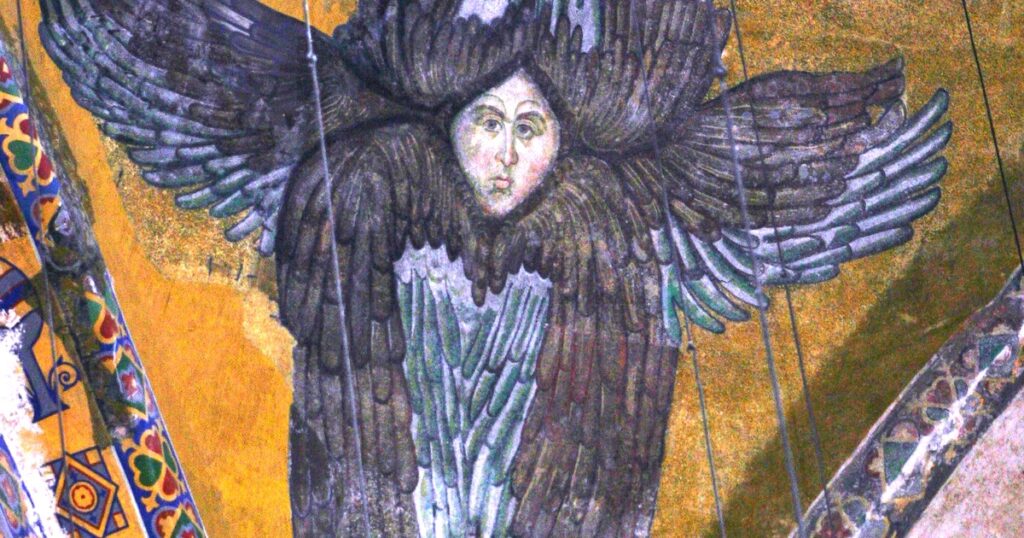An art reflection by Ed Riojas on Lucas Cranach's portraits of Johann Friedrich I. This is one installment of a monthly series providing reflections on works of art and music from a Lutheran perspective.
“…As though something strange were happening to you.”
Those words have been on my mind lately, and I doubt that I’m alone. It seems that every news item these days comes with a sidebar of astonishment and perplexity and shock. The world, already tainted by the Fall, is seemingly dissolving before our very eyes. Society is accepting more and more radical ideas, family values are being devalued, and the truth is being exchanged for the lie. The world is taking a trip in the proverbial hand basket to the devil’s habitation. No one, however, can claim we weren’t forewarned.
Peter warned his audience nearly 2,000 years ago with his entreaty, “Beloved, do not be surprised at the fiery trial when it comes upon you to test you, as though something strange were happening to you. But rejoice insofar as you share Christ’s sufferings, that you may also rejoice and be glad when his glory is revealed” (1 Peter 4:12–13).
The prophets also warned their audiences well before Peter came along, and God Himself gave Adam and Eve — along with us all — a very pointed wakeup call in the garden. Still, we act as if something strange is happening to us, and it unnerves us. In spite of what Holy Scripture tells us, we get alarmed when folks talk derisively of Christians, we are aghast when fellow saints are martyred in far-flung places, and we take great offence when our theological toes get stepped on. We have rights, after all.
Our fiery trials, however, are nothing new, so we should neither be surprised nor dismayed. Consider Prince Johann Friedrich I, whose portraits — including our example — were painted numerous times by the Northern Renaissance master, Lucas Cranach the Elder.
Cranach, his son, and their workshops put a face on the Lutheran Reformation, and Martin Luther and his inner circle sat numerous times to have their portraits painted. Seemingly countless copies of those portraits found their way into Lutheran homes, and enough survived the centuries that we would still recognize those Lutheran movers and shakers if we saw them on the street. We recognize the names, if not the painted visages, of Martin and Katie and Melanchthon and Frederick the Wise and Bugenhagen.
Johann Friedrich I, however, seems a tad off our radar screen. He was always there, but seemingly out of the Lutheran spotlight.


Johann Friedrich I was a nephew of Frederick the Wise and the eldest son of John the Steadfast. One of the earliest Cranach portraits of him shows a handsome six-year-old child in apparel meant for the upper echelon of society. He exudes innocence from one not quite used to his station as a royal.
A portrait of him was painted 17 years later on the occasion of his engagement to Sibylle von Cleve. The innocence is gone, and it is clear the sitter has an inkling of the duties that lie ahead in his life.

Successive portraits of Johann Friedrich I seem to show a decidedly smug royal. It is as if his future reign is crystal clear to him, and he has time and pedigree enough to properly sit for an artist. Something strange, however, was about to happen to him.
The world had been changing as Johann Friedrich I was growing up. Martin Luther, who once sat for his own portrait as a monk, now sat for portraits as a pastor and husband. Other reformers and their royal supporters were sitting for portraits, as well. Rulers, including the fledgling Elector Johann Friedrich I, were aligning themselves with opposing theological forces. That, in turn, caused territorial strife, which eventually blossomed in to the Schmalkaldic War. During the Battle of Mühlberg in that conflict, 7,000 Lutheran soldiers were killed. Their commander, the once-innocent-boy, Elector Johann Friedrich I, received a disfiguring wound to his face, was captured by the Holy Roman Emperor Charles V, and was sent into exile at Worms.
The portrait for our consideration was painted during 1554, the year in which Johann Friedrich I died and nearly seven years after he received the wound. He did not, as most of us would, try to hide the scar that went from his lower eye socket to his upper lip. He did not shrink from the artist’s eye even when his wounded face was obviously swollen and lopsided.

If it were not for the numerous post-war sittings and ensuing copies from the same, the scar might go unnoticed by us. But it is there, along with a change in the ruler’s countenance. The decided smugness of earlier sittings has been replaced by a kind of calm resignation to the thing that could have killed him. It is a picture of hidden loss. In the debacle, not only did Johann Friedrich I lose blood, but he also lost his lands, his electorship, his rightful title, and, we must be sure, a great deal of his pride. At one point, Charles V wanted his head, as well. To say that his theological toes were stepped on is a vast understatement.
But there is another, more beautiful side to Johann Friedrich I, which is hinted at in his oft-added title, “the Magnanimous.” He was a sort of pen pal to Martin Luther, and the two exchanged several letters. When the prince’s father died, Luther wrote a tender letter of consolation that centered on our hope in Christ Jesus alone. The cares of this world, with its unfairness and uncertainty — the very things that still unnerve us — were not mentioned. For his part, Johann Friedrich I never swayed from his beliefs and refused to his dying day to forfeit anything contained in the Augsburg Confession. After having lost a great deal for the Faith, we can sense that this ruler knew he still had everything, and was not afraid to show it.






“Vanity of vanities, all is vanity.” In the old days, people sat and posed for portraits, and artists knew to flatter their subjects, but the essence of a man or woman is hidden, in the heart, and seen clearly by God. Today, art has moved to the “selfie,” images on smart phones, and people often worship themselves more than they revere God.